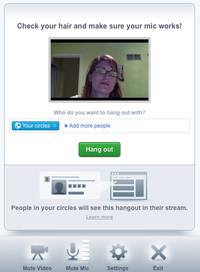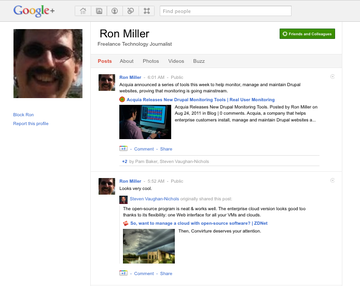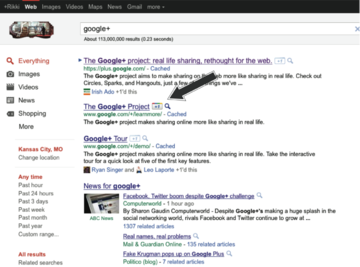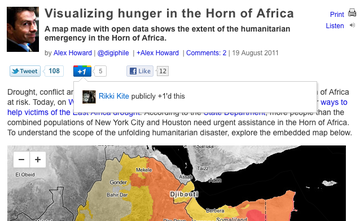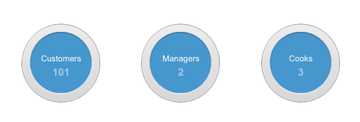Google+ Means Business
When it was launched in June 2011, Google+ rolled out in beta-testing mode and, like the early days of Gmail, users needed an easy-to-obtain “invitation” to join. Within a few short weeks, Google+ users numbered in the millions – millions of beta testers providing valuable feedback to Google while also using older social media channels to recruit new Google+ users.
In an August webcast with O’Reilly Media founder Tim O’Reilly, Bradley Horowitz, Google Vice President of Product Management, explained the launch of the new social media network. In the interview, Horowitz says that Google+ use has been skewed toward the “techie elite,” but that it is also a very international product. He notes that Hangouts, a Google+ feature that allows users to connect on Google+ via webcams (Figure 1), have been hugely popular.
Despite paying for Google Apps services, enterprise users weren’t given immediate access to Google+. Horowitz says that Google did not want to frustrate that huge batch of users while the kinks were getting worked out of this young Google product. O’Reilly, who is also a Twitter user, says that, despite having approximately 55,800 followers on Google+ compared with more than 1,489,000 Twitter followers, he notices more comments and feedback on his Google+ blog posts.
Horowitz explains that Google+ is different. “It’s not just the engagement,” he says. “It’s the rate of engagement and the intensity of engagement.”
But, Horowitz also says developers are hearing feedback that Google+ engagement is too fast and people can’t keep up with their streams. Of Twitter, with its 140-character limitation, O’Reilly says, “There’s this wonderful stream going by and you can dip your bucket in it, but you don’t have to drink the water.”
So, how are early adopters of Google+, which is still in a limited field trial at the time of this writing, using the service in business environments?
Marketing Within Google+
As with other social networking tools, Google+ has huge marketing potential, and with the backing of Google, this new player might have an edge over the competition. “Do you really want to get people to pay attention to your products? I do; in my case, it’s stories,” says journalist Steven Vaughan-Nichols.
Vaughan-Nichols says that he promotes all of his articles on Google+. “Of course, I do that with other social networking services as well,” he says. “What makes Google+ better than the others is that I get real feedback from people who actually take the time to think about my message. Do you know how rare that is?”
“I use it in much the same way I use other online social networking tools,” says freelance technology writer Ron Miller. “I share content I like or find interesting, and I promote my own articles, as well.”
Miller says he’s not sure how much traffic Google+ drives to his links, but he thinks there could be indirect positive traffic results because of the Google+ connection to Google searches. “I’m fairly confident the search algorithm is paying attention to +1 s and pushing up content that proves more popular,” he says (Figure 2).
The Power of +1
In March, Google launched the +1 button, which allows users to recommend content in Google search results and ads (Figure 3). Then, in early June, Google launched the +1 button for pages in websites (Figure 4).
In late August, Google announced that the +1 button would also allow users to leave comments and share web pages with selected circles in Google+ (Figure 5).
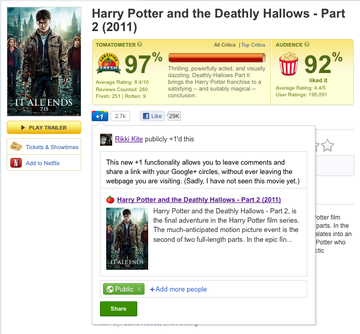 Figure 5: You can integrate your comments with the link you are recommending and then share your recommendation with select circles on Google+.
Figure 5: You can integrate your comments with the link you are recommending and then share your recommendation with select circles on Google+.
The potential of this expanded functionality means a business could organize information and send it to select audiences. For example, a restaurant owner could recommend an article about the new chef in the local paper to a circle of customers, suggest a recipe link to a circle of kitchen staff, send a link about a new city ordinance to a management circle, and so on (Figure 6).
Subscribe to our ADMIN Newsletters
Subscribe to our Linux Newsletters
Find Linux and Open Source Jobs
Most Popular
Support Our Work
ADMIN content is made possible with support from readers like you. Please consider contributing when you've found an article to be beneficial.


